Imagine a massive landform, rising from the ocean, equipped with state-of-the-art infrastructures, luxury resorts, and residential areas. It’s not a continent that has been around for millions of years, but an island constructed by humans. The concept may sound straight out of a science fiction book. But artificial islands are very real and have been around for centuries. But what exactly defines an artificial island?
An artificial island is a piece of land that’s not naturally formed but created by people, typically by expanding existing islets, merging several natural formations, or outright constructing a new one from scratch on areas where there was once only water. Such endeavors often require remarkable engineering feats, extensive planning, and the moving of massive amounts of earth and sand.
Throughout history, these islands have served various purposes. From the ancient crannogs in Scotland to the modern palm-shaped resorts in Dubai, man’s desire to conquer and utilize the water for habitation, agriculture, defense, and tourism is age-old. Travelers today can explore some of these remarkable man-made islands, witnessing firsthand the blend of innovation, luxury, and nature.
10 – Burj Al Arab – Dubai: The Pinnacle of Luxury on an Island
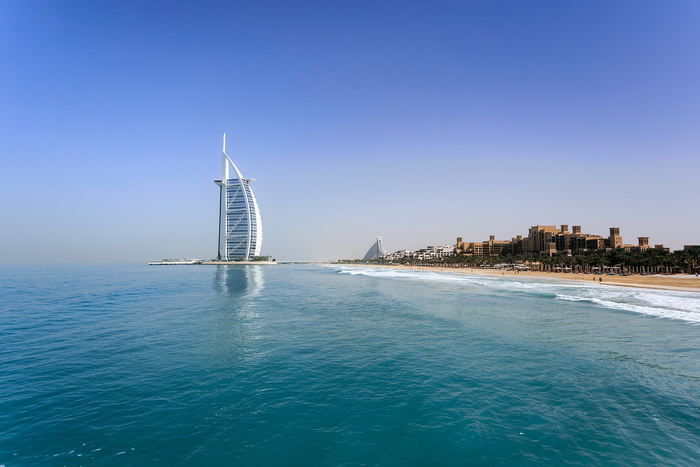
Standing tall and imposing against the vast blue sky of Dubai is the Burj Al Arab, arguably one of the most iconic symbols of modern luxury. Built on its very own man-made island, this hotel is not just a testament to architectural prowess but also to humanity’s boundless imagination.
Many refer to the Burj Al Arab as the world’s only ‘7-star hotel’. Although this title is unofficial, one step inside and you’ll immediately understand why. With interiors adorned in gold, dancing fountains, and personal butler services, it’s no wonder that Burj Al Arab is often associated with the phrase ‘opulent hotels‘. Every suite offers panoramic views of the Arabian Gulf, ensuring guests wake up to mesmerizing vistas daily.
But what’s more fascinating is the island it’s built on. Set 280 meters off Jumeirah beach, it took two years just to reclaim the land from the sea. This foundation serves as both a grand entrance to the hotel and a statement of its distinct separation from the mainland – an oasis of luxury amidst the sea.
09 – Islands of the Uros – Peru: A Living Legacy
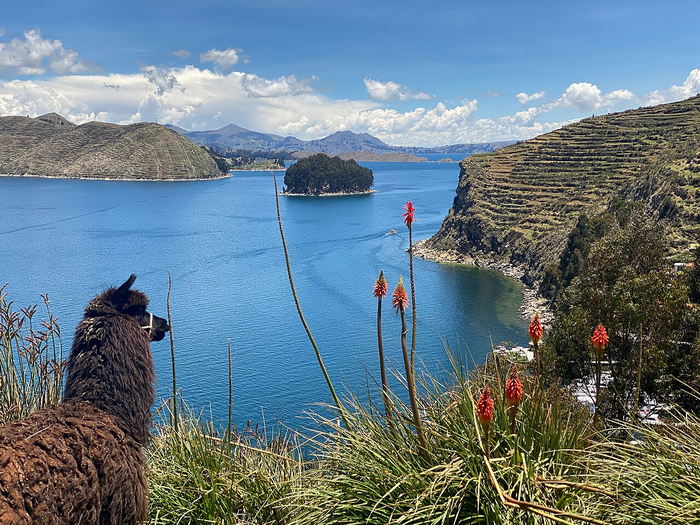
Nestled in the heart of Lake Titicaca, the highest navigable lake in the world, are the floating Islands of the Uros. These artificial islands have a history that’s as deep and rich as the waters they float upon. Constructed entirely out of buoyant totora reeds, these islands have been home to the Uros people for centuries.
The Uros, to protect against more aggressive mainland tribes, initially built these islands. Today, they serve as a living testament to adaptability and resilience. Every part of the island, from houses to boats and even some of their traditional food, is made from the same reeds. As the bottom layer naturally decomposes, new layers are added to the top, ensuring the islands remain buoyant.
For travelers, a visit to the Uros Islands isn’t just about witnessing an architectural wonder, but also immersing oneself in a unique way of life. Engage with the locals, learn about their traditions, and maybe even take a ride in one of their reed boats.
08 – Our Lady of the Rocks – Montenegro: A Sanctuary Amidst the Waves
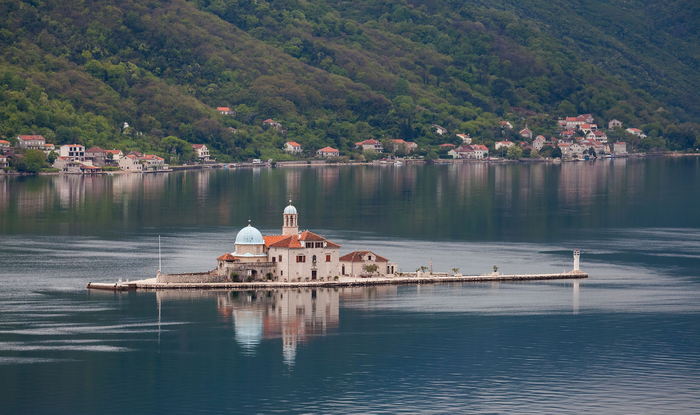
In the serene waters of the Bay of Kotor in Montenegro, there lies a small islet with a monumental story – Our Lady of the Rocks. As legends go, this man-made island was started by seamen who discovered an icon of Madonna and Child on a rock in the sea in 1452. After every successful voyage, they pledged to throw a rock in the same spot, slowly building an islet over the years.
Today, the island houses a Roman Catholic church, also named Our Lady of the Rocks. Inside, visitors can find a rich tapestry of history, from exquisite paintings to silver votive tablets. The church and its museum provide a deep dive into the maritime history of the region, making it a must-visit for history enthusiasts.
Yet, beyond its history, the island offers unparalleled views of the surrounding bay and the mountains beyond. Whether you’re a pilgrim, a history buff, or simply someone looking to soak in the natural beauty, Our Lady of the Rocks stands as a testament to human devotion and nature’s splendor.
07 – Kamfers Dam – South Africa: A Haven for Birdwatchers
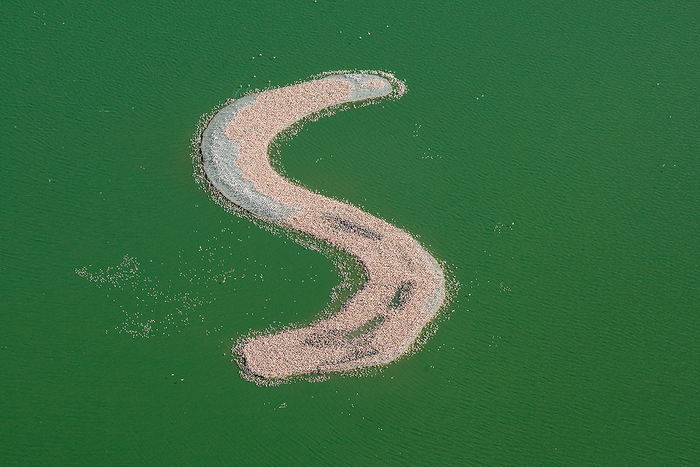
In the outskirts of Kimberley, South Africa, lies a remarkable artificial island that has become a beacon for conservationists worldwide. Kamfers Dam stands out not for human habitation but for its feathery residents. This island was innovatively designed in the shape of a “bird’s foot” to provide optimal nesting conditions for lesser flamingos.
The success of this initiative is evident in the thousands of flamingos that now consider Kamfers Dam their home. However, it’s not just flamingos that grace the waters. Over 200 species of birds have been documented here, making it a birdwatching paradise.
Kamfers Dam is an excellent example of how human ingenuity can aid in wildlife conservation. For visitors, a trip here promises not just awe-striking views of vast flocks of flamingos against a setting African sun but also a lesson in the importance of preserving nature.
06 – Danube Island – Austria: Europe’s Riviera in the Heart of a City
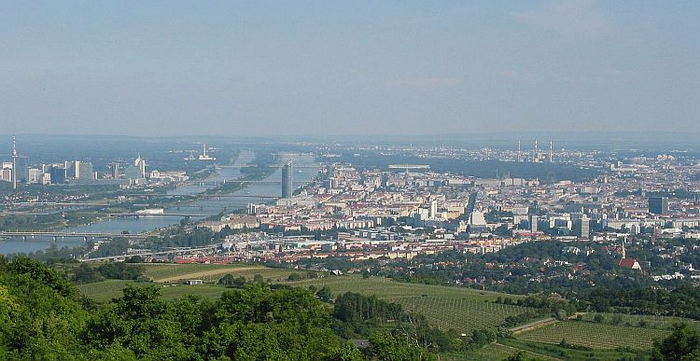
Imagine an island offering sandy beaches, sprawling parks, and a plethora of recreational activities, all in the heart of a bustling city. This is Danube Island in Vienna. Spanning 21 kilometers, this man-made marvel was initially built as a flood protection for the city. Today, it’s a recreational hotspot, drawing both locals and tourists alike.
From sunbathing on its beaches to taking part in water sports or attending the annual Danube Island Festival, there’s something for everyone. Its lush landscapes also provide a habitat for numerous plant species and wildlife, making it a green oasis amidst urban Vienna.
Cyclists and joggers can enjoy the numerous trails, while families can have picnics in dedicated areas. Moreover, with its open-air cinemas, restaurants, and bars, the Danube Island ensures that entertainment is always within reach.
05 – Île aux Cygnes – France: Paris’s Lesser-Known Gift to the World
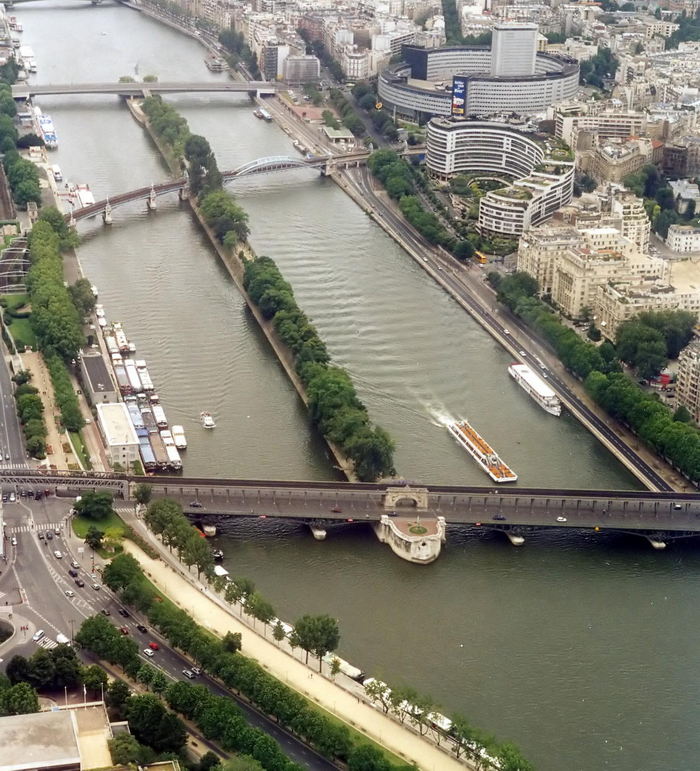
While Paris is globally renowned for the Eiffel Tower and its art, tucked away in the River Seine is a slender, man-made island often overlooked – the Île aux Cygnes. Stretching over 890 meters, this hidden gem was created in 1827 to protect the port of Grenelle.
The highlight of this island is undoubtedly the quarter-scale replica of the Statue of Liberty. Gifted to the city by American expatriates in 1889, this statue is a constant reminder of the enduring bond between France and the USA.
Visitors to Île aux Cygnes can enjoy a serene walk, away from the hustle and bustle of the city. Lined with trees, it’s a favored spot for morning jogs and evening strolls. And as you walk, the iconic Parisian landmarks peek through the foliage, reminding you that you’re in the heart of one of the world’s most enchanting cities.
04 – Peberholm – Denmark: Nature’s Own Playground on a Man-made Island
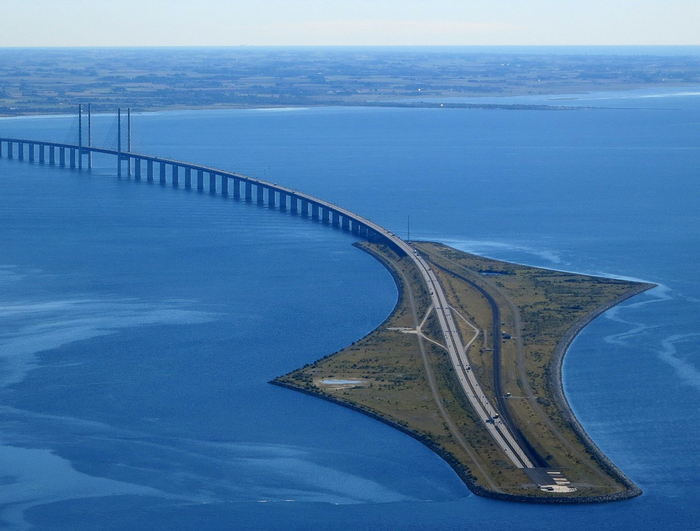
Nestled between Sweden and Denmark, Peberholm emerged not as a hub of human activity, but as a silent sentinel for nature. This engineered wonder was conceived as a part of the Øresund Bridge’s construction, serving as a junction point between the bridge and the tunnel below. Over time, however, it evolved into something more extraordinary.
Despite its origins, Peberholm has transformed into a natural sanctuary teeming with life. Unplanned flora and fauna have claimed the island, with over 450 species of plants and numerous birds making their homes here. It’s a testament to nature’s resilience and adaptability, showcasing how quickly life can flourish, even in the most unexpected places.
For biologists and nature enthusiasts, Peberholm offers a unique chance to witness the spontaneous evolution of an ecosystem, while for the everyday traveler, it’s a gentle reminder of nature’s undying spirit.
03 – THUMS Islands – California: An Ingenious Blend of Industry and Aesthetics
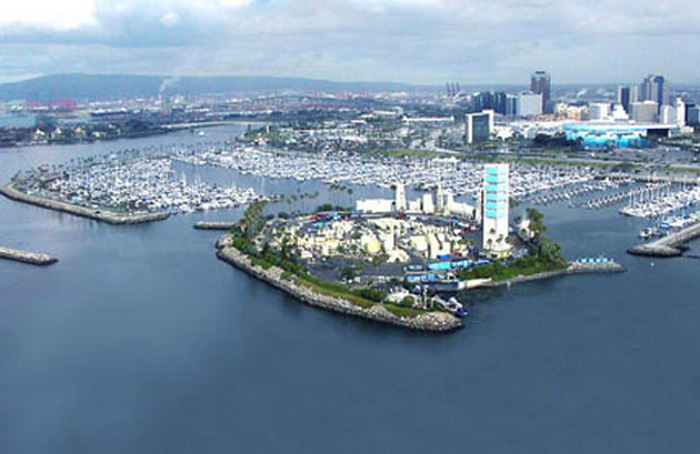
At first glance, the THUMS Islands in Long Beach, California, seem like a luxury resort dotted with modern sculptures and cascading waterfalls. But beneath this facade lies one of the most innovative engineering projects in the USA. These islands were constructed in the 1960s as drilling sites for oil extraction, with the aim of blending seamlessly into the coastal city’s aesthetic.
What sets the THUMS Islands apart is the incredible effort to mask industrial operations. Tall structures hide oil derricks, while the sound of machinery is muted by waterfalls. This intricate design ensures that the city’s skyline remains pristine while vital resources are harnessed below.
Today, these islands stand as a testament to how industry and urban planning can coexist. By prioritizing both functionality and beauty, the THUMS Islands showcase a sustainable model for future developments.
02 – Thilafushi – Maldives: From Waste Management to Industrial Powerhouse
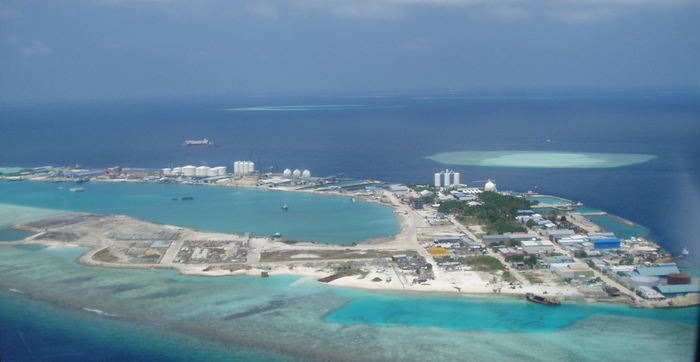
The Maldives, often touted as one of the popular honeymoon destinations, boasts pristine beaches and crystal-clear waters. But it also houses Thilafushi, an island with a story that’s starkly different from the archipelago’s luxury resorts.
Thilafushi began its journey in the 1990s as a landfill site, addressing the Maldives’ waste management woes. Initially a lagoon, layers of waste and construction debris transformed it into a full-fledged island. Today, it has burgeoned into an industrial hub, housing businesses, factories, and docks.
While Thilafushi might not offer the quintessential Maldivian experience, it underscores an essential aspect of sustainability and waste management in modern times. The island reminds visitors of the balance needed between luxury tourism and ecological responsibility in one of the most vulnerable regions to climate change.
01 – Palm Jumeirah – Dubai: The Crown Jewel of Man-made Marvels
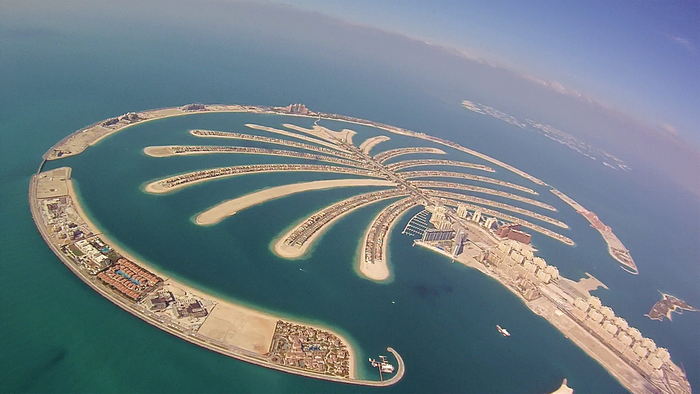
Sprawling out into the azure waters of the Arabian Gulf, Palm Jumeirah is a breathtaking display of Dubai’s audacity and ambition. Shaped like a palm tree, this island stands as a testament to human ingenuity, showcasing what’s possible when vision meets tenacity.
Born from the desire to elevate Dubai’s status as a global tourism hotspot, Palm Jumeirah is the largest artificial island in the world, an epitome of luxury and opulence. From its stunning villas to upscale apartments, this island offers a lifestyle that’s nothing short of regal. But there’s more to it than meets the eye.
Developed by Nakheel Properties, the island isn’t just about ritzy real estate. It’s a dynamic hub teeming with restaurants, resorts, and even its monorail system. For thrill-seekers, it offers water sports, while those seeking relaxation can unwind at its tranquil beaches. Not to mention the world-class shopping and entertainment options that make it a magnet for travelers and residents alike.
A blend of innovation, luxury, and sustainability, Palm Jumeirah is an architectural marvel. The series of breakwaters not only lend the island its distinctive shape but also serve as a sanctuary for marine life, fostering biodiversity in the region.
In many ways, Palm Jumeirah encapsulates the essence of Dubai – a city that dares to dream big, pushing boundaries and redefining the limits of possibility. As a beacon of progress and prosperity, it’s an inspiration for future endeavors in urban development and artificial island construction.
The Creation and Purpose of Artificial Islands: Beyond Just Land
How is an artificial island made? The process is as awe-striking as the finished product. Construction generally involves land reclamation, where vast amounts of material, primarily sand, are moved to a specific location to create the foundation of the island. This material can be sourced from the seabed or even imported from other regions. Once the foundation is set, structures like seawalls or breakwaters are constructed to protect the island from eroding.
The reasons behind the creation of such islands are vast. Historically, they’ve been made for defensive purposes. In modern times, however, they often arise from the need for more urban space or the desire to boost tourism. In bustling cities where space is a premium, artificial islands offer a solution. They’re perfect for housing, commercial properties, airports, and even green spaces.
Additionally, with the rise in luxury tourism, creating unique experiences is paramount. An overwater villa on a man-made island has become a symbol of opulence, offering unrivaled views and privacy. These islands also serve as hubs for marine research, renewable energy projects, and even farming in some cases.
The Impact and Considerations for the Future
Artificial islands, while marvels of engineering, do come with environmental considerations. Their construction can disturb marine ecosystems, affect water currents, and increase the risk of coastal erosion. As with any significant infrastructure project, the environmental impact must be weighed against the potential benefits.
But, are artificial islands bad for the environment? The answer is complex. The very process of dredging and land reclamation can damage coral reefs and other marine habitats. Disrupted water flow can lead to sedimentation, impacting the life cycles of marine creatures. That said, with responsible planning and sustainable practices, the adverse effects can be minimized. Some islands even incorporate eco-friendly designs, focusing on preserving the surrounding environment.

